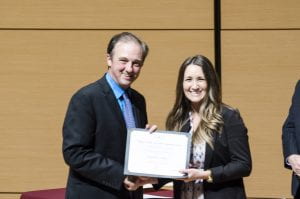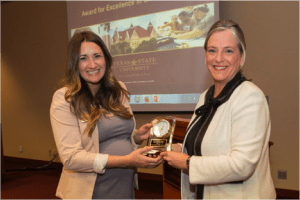Excited to share that our publication, titled “Understanding healthcare providers’ professional identification: The role of interprofessional communication in the vocational socialization of physicians,” is published in the new Journal of Interprofessional Education & Practice. This project originated from Brenda MacArthur’s masters thesis at Texas State, advised by Dr. Melinda Villagran. I was thrilled to join them on the project, which shows the crucial role of interprofessional communication—communication between physicians and other healthcare providers-in fostering professional identification among physicians.
Article Published in Sociology Compass
I am excited to share a framework for studying social media that I have written along with Jeff Treem, Casey Pierce, and Diana Biffl. In this article titled, ““What We Are Talking About When We Talk About Social Media: A Framework for Study,” we review various definitions of social media and note that much of the confusion regarding social media comes from conflation between social media types, platforms, and activities. To facilitate investigations of social media, we debunk common social media myths and review the relationship between social media and several prominent sociological concerns. We conclude by reflecting on directions for future research on social media. I hope you enjoy the read!
Article Published in Qualitative Research Reports in Communication
I partnered with colleagues in departments of Kinesiology and Health Education and Communication Studies at the University of Texas to explore wearable fitness devices from a communication perspective. Although studies have investigated how the technical features of wearable fitness trackers promote physical activity, we understand less about how communication surrounding such devices may contribute to their success. Our findings, which you can read here, show how and with whom people communicate fitness tracker messages and explains the effects of sociomaterial practice on interactions between wearable fitness device users.
Article Published in Business and Professional Communication Quarterly
Our paper, “I Communicate, Therefore I Belong: Processes of Identification Among Organizational Representatives” is now published in Business and Professional Communication Quarterly. I had the pleasure of collaborating with Jeffrey Treem and Jacob Ford in this project, which demonstrates how agency social media writers (those who were not employed by organizations they represented online) adopt multiple identification lenses to accomplish their work. Findings from our study, which you can read here, offer insight for social media writers to better communicate on behalf of organizations.

Article Published in Health Communication
My research with Yaguang Zhu has just been published in Health Communication. The article, “Communicating Health at Work: Organizational Wellness Programs as Identity Bridges,” discusses how employees enact their personal health identities through workplace health promotion initiatives. You can read the paper here.
Article Published in the Western Journal of Communication
My article “What Happens Before Full-Time Employment? Internships as a Mechanism of Anticipatory Socialization” was just published in the Western Journal of Communication. By investigating how interns learn about and identify with organizations, this study challenges our understanding of anticipatory socialization and our assumptions about full-time employees as uncertain newcomers. In fact, results show that internships may provide more realistic perceptions than traditional means of anticipatory socialization, like recruitment or vocational messages. You can read the paper here.
Article Published in Communication Studies
My paper “I’m New… Again: Reconceptualizing the Socialization Process Through Rotational Programs” has been published in Communication Studies. The paper explores how rotational employees’ learn about and adapt to organizations and roles differently than traditional employees. The results of my study suggested a Model of Rotational Socialization, which more accurately portrays the socialization process by accounting for the contrast between role and organizational socialization. You can read the paper here!
College Achievement Award in Teaching
Award for Excellence in Online Teaching
I was selected as the recipient of Texas State University’s 2015 Award for Excellence in Online Teaching for my course, COMM 3301, Empirical Research Methods. The award recognizes and rewards superior online teaching, provides models of excellence for fellow faculty, and encourages all faculty to continue to improve and advance their online teaching pedagogy.
Research Enhancement Grant
My grant proposal, “’Pumping Up’ Survey Research: Boosting Participation in Texas State University’s Total Wellness Program” with Dr. Tricia Burke, was funded from Texas State University’s Research Enhancement Program. With this funding, we will conduct qualitative interviews to explore the role that coworkers play in influencing participation in our wellness program, as well as how people’s sense of identification with the University might affect their wellness choices. By studying the communication processes surrounding this workplace health initiative, this research aims to increase employee participation rates and improve people’s health behaviors.








